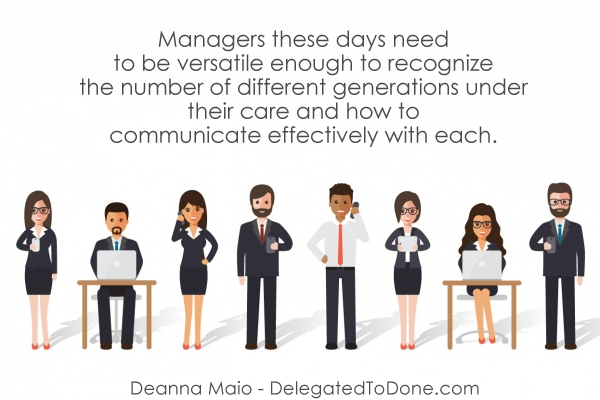In today’s workplace, there is a lot of diversity. One aspect of the diversified work force that is not often considered is generational. Age plays a significant role in how people perceive their job in the workplace, how they communicate and also how they respond to changes that occur. Keep reading and learn about the five generations of workplace employees.
Just who am I working with?
Besides the typical differences that team members have: race, creed, religion and socioeconomic status, there is also a difference in age. There were four main generations that existed, but now we are up to five. This means differences in experiences and upbringing that color how and what we view as problems and conflict. Handling conflict is also a different animal, depending on the generation of the team member who is being addressed.
Managers these days need to be versatile enough to recognize the number of different generations under their care and how to communicate effectively with each. Add to that the fact that individuals within the same generation have differences, and you have a gigantic task ahead of you. But, don’t be dismayed. The first step is becoming familiar with each generation, which is what we are about to highlight right now.
The 5 Generations of Employees in the Workplace today
- In-betweeners – this is the generation that was born between the end of World War I and the end of World War II. These are the years between 1930 and 1945. They are also referred to as the “Silent Generation”. This is one of the smallest groups percentage-wise in the workforce today.
- Baby boomers – this is the generation you hear about most. They were born after World War II and the Korean War conflict. The years are between 1946 and 1964. They are so large that they are divided into two groups: Older Boomers (1946-1953) and Younger Boomers (1954-1964). They are the biggest workforce group today.
- Generation X – this generation was born between 1965 and 1976. They are a small generation at only 11 years. They grew up in the early to mid-70s when there were no conflicts of war.
- Generation Y – this generation was born between 1977 and 1990. They outpaced Gen X as of 2011 as the most prevalent generational group in the work force. They have the benefit of Gen X and/or younger boomer parents.
- Millennials – this generation came in with the World Wide Web in 1991. They have been in the workforce for a few years now and are still relative newbies. They are also the “Now Generation”. Everything has been handed to them rather quickly because of the technology boon.
[Tweet “Who is working for you in your office? It could be one, two or all of the five generations listed above. https://www.delegatedtodone.com/what-are-the-5-generations-of-employees”]

